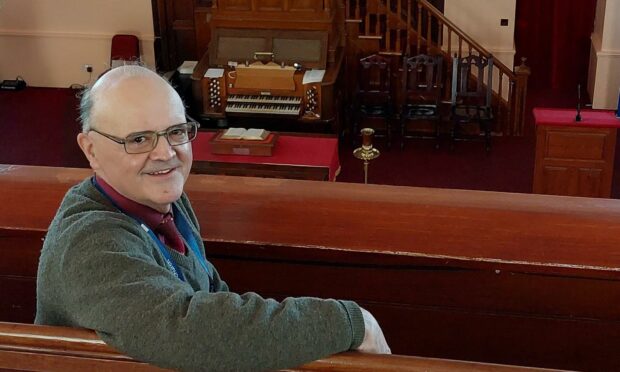A former Aberdeenshire music teacher is hoping to show crowds that Doric can be used in more serious styles of music.
Robert Milne is a retired music teacher who is now pursuing his love of composition through a PhD at Aberdeen University.
He feels that, while Doric poetry and prose have had their revival, that of Doric composition is yet to come.
Mr Milne experiments by mixing the Doric dialect with more formal musical styles, aiming to show that is does have range and depth.
He explained: “Musically, Doric has been associated with Bothy Ballads and humorous songs, but little, if anything, has been produced for the concert hall using the language.
“There has been a good revival of poetry and prose written in Doric, but new composition has lagged behind.”
‘Far from being ‘bad English”
Mr Milne remembers a time when the use of Doric was discouraged.
He recalls: “Many Doric speakers of a certain age will remember that when they started school they were expected to speak ‘proper English’ and speaking Doric in the classroom was liable to result in punishment.
“Doric was regarded as ‘sloppy English’ or even slang. Happily, this attitude has changed and the use of Doric is now being more actively promoted and I hope to enhance this further through my music.
“Far from being ‘bad English’, Doric is a distinctive dialect of the Scots language, with many cognate words with languages found around the North Sea, and some specialist vocabulary due to Aberdeen having been a major centre of trade with continental Europe at least as far back as the fifteenth century.”
Keeping the language alive
Mr Milne’s latest work, Sangs For Gyan Up, makes use of Doric translations by Gordon Hay of verses from the Psalms.
He will be showcasing it at Forgue Kirk, near Huntly, on Sunday November 21, as part of the building’s bicentenary celebrations.
He hopes he can help keep the language alive through his compositions and said: “One of the best ways to give a language status is to write it down and Doric survives in poetry and other literature from at least the nineteenth century to the present day.
“I hope I can make own contribution to this important tradition, taking Doric into the concert hall.”
‘Doric has no limits’
Tom McKean, director of the Aberdeen University’s Elphinstone Institute, was excited by Mr Milne’s proposal for his PhD project.
He said: “When Mr Milne first came to the Elphinstone Institute with his PhD proposal, he said he had been inspired by hearing about the Institute’s Doric Messiah. We are delighted to see Mr Milne building on this and showing that Doric has no limits.
“Doric is traditionally seen as the language of home and family and is still under-used in the more formal walks of life. We don’t hear enough north-east voices in our media and in civic life.
“Mr Milne is part of a new movement of talent encouraging people to embrace their language and to break down the social barriers which constrain its use.”
